In Sports photography, access is key.
Without access, you won’t succeed even if you have the most comprehensive array of lenses out there.
So if you have access, you’ve already improved your chances of success by at least 40%.
The other keys to success?
You have to be able to anticipate and concentrate for long periods.
David Beckham appears to be moving to AC Milan if all the parties concerned can come to some sort of agreement. His presence in Major League Soccer has not had the impact. I think it was asking too much of just one player, no matter how skillful, to have that kind of effect. Remember other great players have come before him, Pele, Beckenbauer, George Best and to name a few, didn’t succeed either.
Being knowledgeable and following a variety of sports, not just the popular ones, is crucial.
And finally a good ounce of luck doesn’t hurt either.
What exactly should you be looking for besides shooting great action?
 Faces
Faces
Back of heads are not terribly engaging.
I think we are so in tuned to seeing faces, we don’t realize it.
We do want to see faces of athletes whenever possible.
Grimacing faces add to the drama and excitement.
Unfortunately some athletes hardly show any emotions even when they win.
Faces in sports can be the difference between a good picture and a great picture.

Timing
Peak action is probably what you’re after.
There may be some luck involved but a softball picture without a visible ball is not as exciting.
Without the ball, you don’t get a sense of how close the play was, how bad the throw was et cetera.
With baseball and softball, the play at a base has to be close.
If the throw is early or too late, the ball is either in the glove or out of your picture.
That’s not your fault. It’s just how the game goes.
So the element of luck is there for sure.
With ball in the picture, you can see how close the sliding player came to being out.
You should take notes on whether the player was out on that play.
A Different Viewpoint
Strive for a different viewpoint to surprise your viewers and to give them a fresh look of a “tired-looking†sport.
This may be something as simple as shooting when weather is not so good sometimes.
Or even simply being creative with your photographic technique.
It may mean working harder by bringing in more equipment but your efforts will be rewarded.
If it it doesn’t work, you’ll at least learn something new.
Multiple exposure images are harder to do on digital cameras but not impossible. I just don’t happen to own a camera body that allows me to shoot multiple exposures on the same frame.
The picture on the left was shot on slide film. I cocked the shutter 3 times without advancing the film and popped the flash during the young gymnast’s routine
Backgrounds
Too often inexperienced photographers don’t consider this at all.
It is understandable in a way. They arrive at the event and are caught up with the raucous crowd.
They probably won’t realize this problem with backgrounds until they see their images on a computer screen.
Shooting with wide open apertures on long lenses can only do that much sometimes, so be on the lookout for what’s behind the subject at all times.
.
Variety keeps you on your toes
If you’re serious about sports photography, you should try photographing different sports.
The challenge is trying a lesser known sport.
How about Sepak Takraw?
This is a southeast Asian sport like volleyball but played with feet and the head, no hands.
This sport is so fast, the video below is slowed down so you can see the movement, intensity and acrobatic prowess of the players.
Golf
I know I better thread lightly here or I’ll get a ton of hate mail from golfers. This is just my opinion.
Just the same way most Americans don’t get soccer, I don’t get golf. I do know I would enjoy the sport if I could afford it but as far as sports go, next to baseball, golf is one sport I never enjoyed covering.
- expect to be hauling at least a 300 mm lens with a monopod and 2 bodies, maybe a flash, and a 70-200 mm zoom.
- you will be walking all 18 holes, more if it goes into playoffs.
- you don’t get to hang out with just the same foursome
- if the leader boards are not kept current, you will be in a world of hurt trying to find a certain golfer when the lead changes suddenly.
- besides that, the light is usually extremely harsh. Faces are inevitably shielded by visors or baseball caps. You’re never close enough to be able to fill flash or anything of that sort.
- then there’s all those restrictions. You can’t stand directly in the line-of-sight of the golfers. You can’t trip your shutter until they actually hit the ball if they’re on the green during the short game.
- if the game goes into playoffs, all those “great pictures†you took in the early rounds don’t mean much anymore. It’s like starting all over.
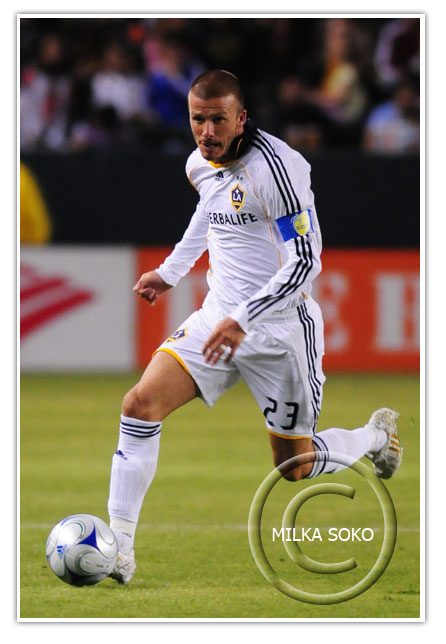 Soccer
Soccer
My favorite sport soccer happens to be pretty tough to shoot.
Most of the time you have to park yourself on the field and just hope you’re in the right place at the right time.
But it is not physically as demanding as covering golf or football.
You generally get your long lens, park yourself near the corner post and wait.
Unfortunately for me, the newspaper I worked for never cared much for soccer.
Their attitude towards soccer was understandable since US soccer has an image problem.
So I got to cover very little of that.
According to my good friend Milka Soko, lighting at the Home Depot Center where the Galaxy plays is decent with expected lights falling off at some places. Her exposure was ISO 800 1/500 sec @ f2.8. She uses a Nikon D300.
Luckily I have important friends in high places.
My good friend Milka Soko was happy to share her pictures below.
[svgallery name=”soccer”]
Badminton
Tony Gunawan, former Indonesian doubles ace, and his partner Howard Bach won the World Championship title in Mens Doubles for the US in 2005 when the event was held in Anaheim, California.
Lighting conditions at most indoor gyms are very poor. The exposure for this picture was ISO 1600 1/200 @ 2.8. That was not enough to freeze the action at all. The audience were also lit, so there were very few spots on the court to shoot from where you could find an uncluttered background. This picture had to be taken through the net because I didn’t have access to a longer lens.
Anytime you step indoors to cover a sport, you are heading into low light and very limited options. In general, sports photography requires long lenses since you can’t be near athletes.
The fastest telephoto made is probably Canon’s 200 mm f1.8. Extremely rare, this lens is probably upwards of US$7,000 if you can find it. Of course the Nikon folks will point out that they had a 300mm f2. I had a chance to use one when I was an intern at the Buffalo News. Sorry folks, both lenses were manual focus. I wonder those few photographers out there who bought one are still using them especially with their autofocus digital SLRs. If you know of anyone still using this, let me know.
That monster of a lens made a 300mm f2.8 look tiny. The objective, (front of the lens) was so big the lens was front heavy.
The world’s fastest racquet sport, badminton, is also hardest to photograph because of the lighting conditions and how the indoor stadiums are lit.
When covering any sport, you need to understand how the game is scored. Not knowing when a game is about to end will be disastrous for a photographer because they will no doubt miss the jubilation of the winner.
The International Badminton Federation has experimented with various scoring formats over the years and have settle d on the best of 3 games which is called the Rally system. First to reach 21 wins like in table tennis.
Shutter speeds, Apertures, ISO & White Balance
Up till this point, I haven’t mentioned those two settings because those are variables too difficult to predict until you are actually there.
Also, you will have to make some decisions about how much digital noise you’re willing to live with.
Generally speaking the newer cameras handle high ISOs better producing less digital noise.
Photographers without the budget to get newer cameras can try a software solution like Noise Ninja for about $80.
Most sports photographers have at least a 300mm f2.8 lens at a minimum.
They will also carry a 70-200 f2.8 lens and most likely that has built-in image stabilization.
And the majority of sports photographers take their pictures at f2.8 to blur out the background but also to get the highest possible shutter speed to freeze action.
Every now and then, they may need more depth-of-field but very rarely.
That by the way is why under the one of the Auto modes, you see the icon for Sports or someone running.
It’s also exposure mode that favors high shutter speed, Shutter Priority or Tv (Time value according to Canon)
So 2 bodies are pretty standard. One body is attached to the long telephoto which is mounted on a monopod for support.
Depending on the camera body, the image sensor may be full frame or may have a 1.6x, so a 300mm will be 480 mm lens.
To successfully hand hold a lens like that with little camera shake would require you to use a minimum shutter speed of 1/500 sec. Needless to say, Milka who is a professional, based her choice of settings on this.
The one good thing about shooting in artificial lighting like a soccer stadium at night is this: once you have the exposure down, it doesn’t change very much, unlike a daytime game when the Sun changes position in the sky or goes behind a cloud suddenly.
The other advantage is the crowd in the stands are not lit, so they aren’t as distracting.
An excellent website where lots of sports shooters and photojournalists hang out is what else? Sports shooter. To be a member, you have to know a member who will vouch for you and you pay $75 a year.
The perks to belonging to the group is that you get access to their classifieds where used equipment can be bought or sold with some degree of safety without being ripped off.
I don’t shoot enough sports these days to belong to this group. It’s a good resource to bookmark so that you can learn what the professionals are doing.
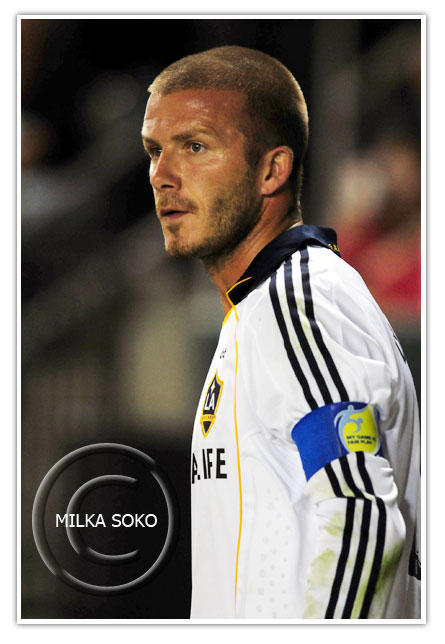
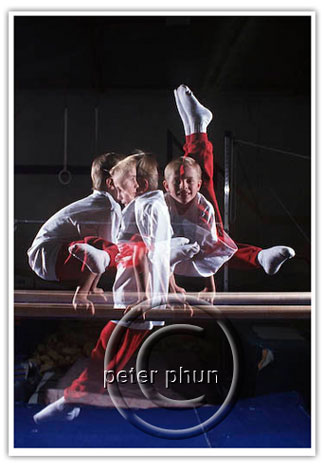
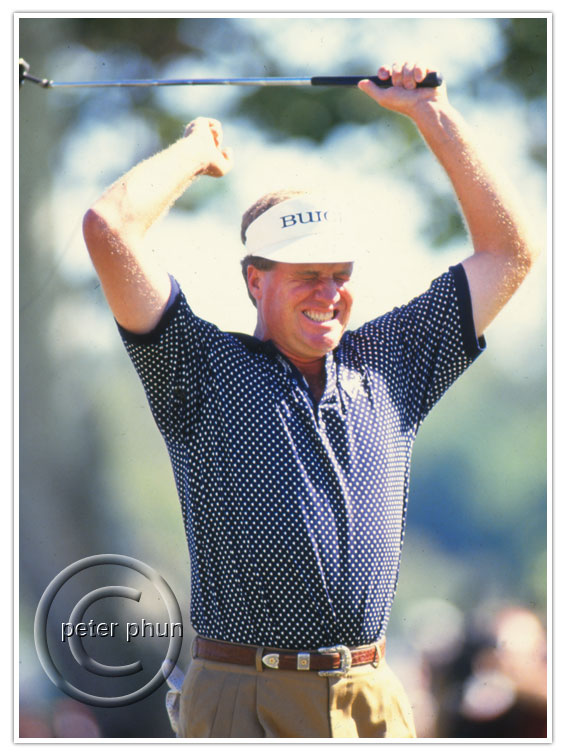
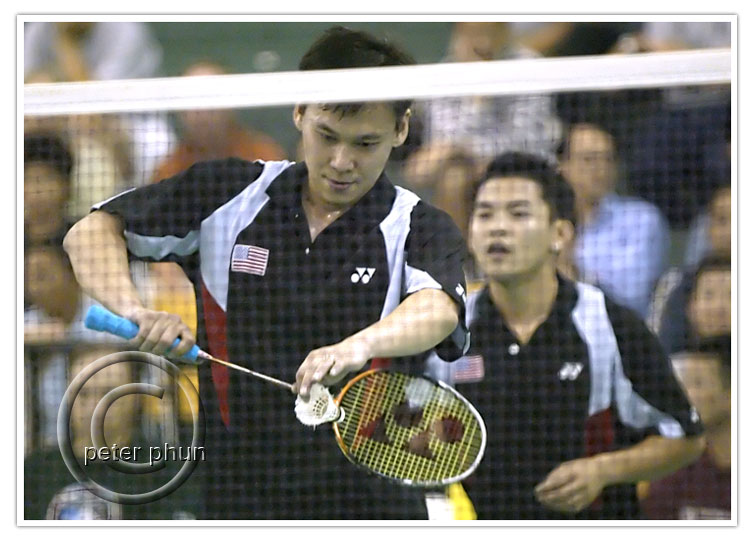
Thanks for the reply,
On that note he said he would put up a web site for me then changed it to “you can run the photo section to our web page and be in charge of all the photos to be posted” does that mean Im giving up all rights to my pictures? Also hes made busness cards for me with his gym name on it. What should I do?
Hello Cesar,
Thanks for visiting my website and leaving your kind comment. I do have to caution you about the all expenses paid and all those “perks.†Be sure you have something in writing that in return for those perks, you also own the rights to those pictures and that what you’re doing is not “work-for-hire.”
If you are agreeing to “work-for-hire” that essentially means they own everything.
You’re working and learning on their dime but with no possibility to see any monetary gain from it. If you have a full time job and this is a hobby that might be well and good but if down the road, you want to be a professional doing this, you would have shot yourself in the foot by not making this clear to them.
first of all great web site! I just started doing the sports photography in March because my son wrestles in a youth league.Were my son does his private leasons is also an MMA training center owned by a former UFC fighter.He liked the pictures that I was taking so asked if I would be the official photographer for his pro fighters, and of course I said yes and this intails all expences paid for all trips local or away. I also get the pirch atop the side of the octagon sometimes. I dont get paid to do this but im just starting off and having a hell of a time learning.You have great advice like starting a portfolio and give great direction that I will be taking, I’m truly glad I came across your web site.
¡Hola Alan!
I’m sorry I can’t answer you in portuguese, so I’ll try my best in English. Simple viewer is a wonderful flash plug-in. There is a plug-in version available for Photoshop. You download the “Simple Viewer script,” place it inside the a folder within Photoshop. After it generates the necessary html files, you upload the entire folder into your webserver.
The version you see here on my self-hosted WordPress blog is similar, but it’s a plugin which won’t make much sense to you unless you are also using WordPress Content Management System.
I use Dreamweaver to manage my the static portion of my website but I haven’t tried Simple Viewer there. If I have time, I’ll try and help you but see if you can find solutions here.
http://www.simpleviewer.net/simpleviewer/faq.html
Thanks for visiting my blog. I’m a fan of Selecao.
Hello, I would to congratulate the photos, very good, but my intuÃtpo it is to ask how do I incorporate the simpleviewer the site, I am trying to put the Dreamweaver, I tried putting the swf but not got success, if you can help me thank you.
Terance,
Thanks for visiting my blog and more importantly leaving your comment. Do share some of your pictures with my other readers by commenting.
You have provided some fantastic tips that I will surely be using in the future.
While most dream of being on the sideline and courtside at a pro event, you miss a great opportunity to get fine shots at the area high schools. In most places, especially smaller schools, it’s just a matter of calling the school’s Athletic Director and let them know you are coming. Don’t expect them to really do any more than let you in. Once you are there, be a pro and don’t try to use flash. Flash is not allowed 99% of the time from the field or court. It distracts the players and officials, meaning, it’s a safety issue. Keep in mind, high school gyms generally use sodium or mercury vapor lighting, meaning the light rays actually cycle and can give your white balance fits. If you want an example, click off several shots per second of the same thing, then replay the captures, you’ll see how the light changes, even though you didn’t move. If you want to shoot successfully in a dark gym, you need some fast glass. If you have slower than 2.8, I’m sorry, you just won’t get consistent results. As for “Auto” or “Sports” mode, not good enough. Indoor sports photography means at least “Program” if not full “Manual” mode. The good news, it’s challenging, fun and you will certainly learn a lot about how to use your camera. Sports photography offers rare opportunities to the photographer.
The point is, high school athletics can give you a chance to be close to the action to train your skills. A word to the wise, when you see a photographer at the game who is clearly supposed to be there for a local newspaper, give him or her plenty of room. You are there learning to be a better photographer, they are working photographers and they have to get good shots. You’ll find that most of them are great sources of advice if you don’t get under their feet while they are working.
thanks for the tips. i have trouble in shooting action shots in low light. im a newbie in action sports photography and i your posts are really helpful. thanks a lot.
mike
Dave,
An excellent point you bring up about access. If you read my tips about freelancing for newspapers and publications or the universities, I suggest you to start to build your portfolio by photographing amateur sports. If you have a portfolio of unusual sports, that is going to make you stand out against the competition. You’ll be noticed for sure. I know I tire of seeing the same “armpit†shots in hoops or tackles in football. It’s human nature to want to see unusual. Glad you enjoyed my tips. Share you pictures with me sometime by email.
Thanks so much for so many great tips.
I am a very amateur photographer whose favourite genre is sports photography. My budget restricts me to an entry level dslr and kit lenses but under the right conditions, I’ve been quite pleased with some of my sports shots.
One point I would like to make is that “access” is much less of a problem when shooting amateur sports as opposed to professional. Some of my favourite shots were taken while standing in the middle of a tennis court while the players were warming up. Once during an exhibition high school football jamboree, I actually received permission to line up on the field 20-25 feet behind the QB. The bottom line is that sometimes, access to great shots is best attained outside the normal time restraints of the game.
Kevin,
Thanks for visiting and commenting. Sepak Takraw is truly for the very athletic. The video has been slowed significantly. If you were to watch it live and real time, you wouldn’t see how close the blocker’s head comes to the foot. I can’t imagine another sport where you would put your head to block a shot where someone is swinging their foot full force in your direction.
Share some of your pictures!
Pete,
Thanks for posting the video of Sepak Takraw, WOW! For fun, I shoot neighborhood kids sports…including soccer. I played football & baseball growing up so shooting soccer was different but fun. However, got several “back of the head” shots. You provided many good tips that I will incorporate, thanks!
Kevin
Hagen,
Thanks for stopping by and more importantly commenting. I’ll have to check out Henry Chen. There’s a lot to know. Because it’s all pixels on a computer and constantly evolving, one person can’t possibly know it all.
While the newcomers may be able to photoshop circles around the veterans like me, they probably won’t have the solid foundation of lighting and exposures (acquired from shooting miles and miles of film).
In the end, you have to ask yourself where you prefer to spend your time.
Me? I rather shoot something right and have as little post production as possible.
Good luck with gaining access. It’s not impossible. It just takes persistence and hard work.
It’s the dream of every guy I know out there who has a dSLR and a zoom lens to shoot professional sports.
Great info here, Pete! I’m currently in the process of gaining “access”. I follow Henry Chen also. He shares alot of info too.
Thanks Jim, for sharing. I generally don’t bother moving up and down the field. Soccer is not like football. With no significant stoppage time, you’ll run yourself raggard.
Best bet to use a tele-converter with long lens for the other end, be midway between goal and corner with 70-200 zoom. There are few set pieces in soccer except for corner kicks and free kicks, so I tend to change positions only then.
Great tips sir. I’ll share a quick story with you about soccer.
I was set up on the corner of a game between what I thought was one good team and one not so good team. Without fail, all the action stayed on the opposite side of the field. When I move, so did the action. I was that way the entire game. At some point, I stopped being angry and started laughing.
Hi Jay!
Thanks for visiting my blog and commenting. I’m pleased you found my tips helpful. I actually have other tips on freelancing as sports photographer. Feel free to post back if you have other questions.
You provide some really great tips! I just got started with photography and this information is very helpful.